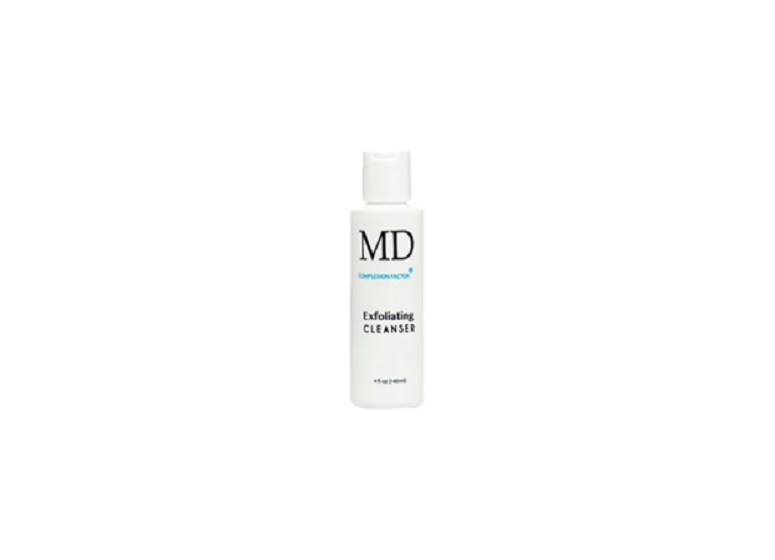To show fresh, young skin, exfoliation involves sloughing off the old, dead skin cells. Exfoliation significantly enhances the appearance of skin tone and radiance since it gets rid of surface debris and oil as well as old, dull skin. The appearance of attractive skin can be renewed in one of the simplest and quickest ways possible. Benefits include improving blood flow, removing dry or dull skin, and whitening and enhancing the appearance of your skin. Dead skin cells on the skin’s surface are removed during exfoliation. The manner and frequency of exfoliation should be based on your skin type.
Chemical And Physical Exfoliators
For example, a dry brush, a washcloth, grains, sugar, beans, nuts, granules, powders, or any other physical instrument can be used in physical exfoliation to use abrasive compounds or physical items to exfoliate the skin. Physical exfoliation may have the unfavorable side effect of causing little skin tears. In severe circumstances, these tears may result in infection.
Utilizing an acid to dissolve the bonds that permit dead skin cells to remain on your skin is known as chemical exfoliation. The words “acid” and “chemical” shouldn’t alarm you; acids are substances that are naturally present in your skin and which smooth your skin by acting on its molecules or chemicals. Compared to manual exfoliation, chemical exfoliation is generally gentler on your skin.
For Normal Skin
Any face exfoliant, whether physical or chemical, can be used by people with normal skin. It’s best to switch up your exfoliation techniques and do it just occasionally. Exfoliators with bentonite clay or charcoal are ideal for keeping healthy skin. As for ingredients, you essentially have your pick of the bunch. You can use any exfoliating technique if your skin is healthy and free of any issues. The exfoliation of this skin type is safe both manually and chemically.
Oily Skin
The exfoliation of oily skin can also be done chemically or physically. As a rule, those with oily skin have thicker skin, thus physical exfoliation will be beneficial. Your skin will become more pore-clean as a result of the acids in chemical exfoliants. For managing the oil in your skin, glycolic or salicylic acid works great. Don’t over-exfoliate, just as you wouldn’t with normal skin. Manual exfoliation and brushing can help skin that is oily or thicker. With oily skin, physical exfoliation may be necessary to remove an additional layer of buildup from the skin’s surface. To achieve the finest effects, gently scrub or exfoliate the skin in circular strokes.
Dry Skin
Dry or flaky skin needs to be exfoliated. On dry skin, avoid mechanical exfoliation because it can produce microtears and drying. Dry skin responds well to AHAs. In addition to promoting healthy skin turnover, glycolic acid will aid in removing dead skin cells that are sitting on the skin’s surface. Glycolic acid should be used first, followed by a moisturizer and SPF. The risk of solar damage to the skin may increase. Physical exfoliants should be avoided if you have dry skin because they can aggravate your skin worse, depending on how dry it is. To improve the absorption of your moisturizer, use a chemical exfoliator to gently yet effectively remove dead skin cells from the surface. Dry skin benefits greatly from gentle exfoliants such as kaolin clay and lactic acid.
Mature Skin
A mild chemical exfoliant will help revive dull skin and restore mature skin’s natural radiance if you have mature skin. Dead, lifeless skin cells accumulate on the surface as we age because our skin cells do not regenerate as quickly as they did when we were younger. These can be eliminated to show younger skin underneath and increase the efficiency of any additional serums and treatments.
Sensitive Skin
Physical exfoliators should be avoided by persons with sensitive skin because they can aggravate the condition more To keep their face smooth and aid in a pore clearing, those with sensitive skin must use chemical exfoliants. For sensitive skin, maintaining calm, smooth skin is advantageous and is made possible by moderate exfoliation. Prevent utilizing mechanical exfoliating techniques like scrubbing. These can cause your skin to become even more irritated and red. Make use of a soft washcloth to apply a chemical exfoliant.
Combination Skin
Chemical and mechanical exfoliation may be necessary for combination skin. Never use both in one application on the same day as it can irritate the skin. Apply a moisturizer as soon as possible if your skin feels dry after exfoliation.
The Benefits
- of dead skin cells must be removed
- brighter skin is the consequence of improved circulation, which also encourages skin turnover.
- making it possible for serums and moisturizers to absorb better
What To Use To Exfoliate
exfoliating brush: When removing layers of dead skin cells from the body or face, this is typically done with a bristle brush. For dry brushing, some are made. Some can be utilized in conjunction with your body wash or facial cleanser.
Spatula for exfoliation. The skin can be exfoliated more gently using them. Using warm water, soap, or body wash in the shower, you can lather an exfoliating sponge.
glove used to exfoliate. Use a glove if you have trouble holding brushes or sponges in your hands. Wash it down in the shower with soap or body wash. They may work well on huge areas like the arms or legs.
A scrub for exfoliation. With a soft, circular motion, this can be applied straight to the skin. Applying the scrub will prepare your skin for a warm water wash.
Wrapping Up
Here you can get to know everything about exfoliating and types of exfoliators. You can use facial toner and exfoliators for face both are effective and give the best result.



